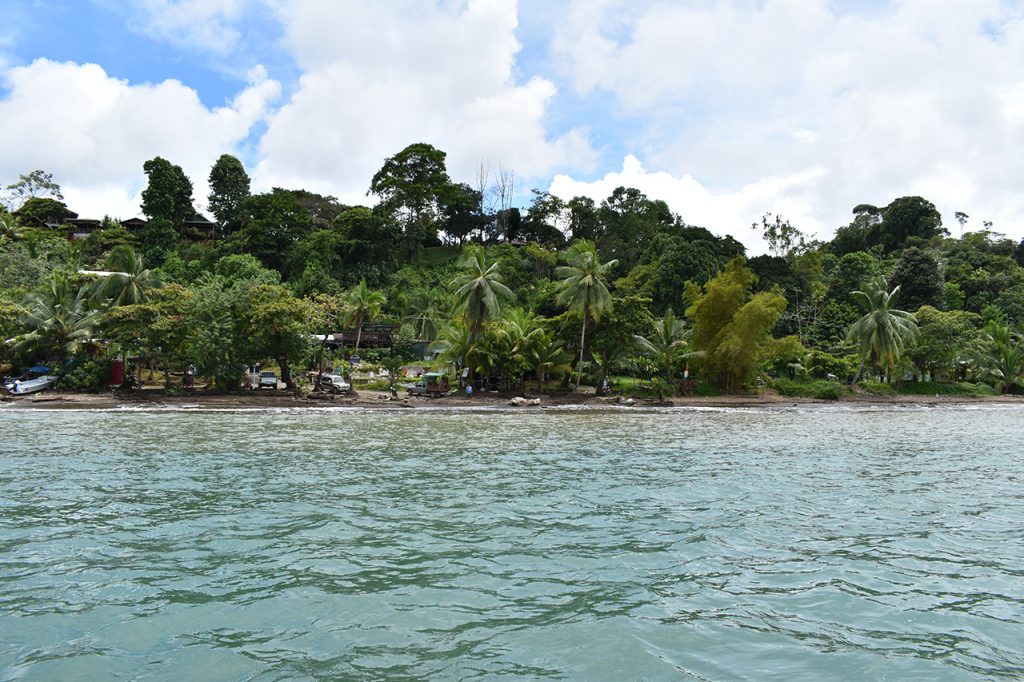Hi there,
From Uvita we had to take a bus to Palmar and then a taxi to Sierpe, from where we would go by boat to Bahía Drake. Here the curious thing is that the bus that goes from Palmar to Sierpe does not fit with the ship’s schedules, so you are forced to pay 9000 colones for a taxi instead of 500 colones that the bus can cost you.
In Sierpe, once again, they tell you the price in dollars and then they make the change to colones, which is not the current one, so you lose money in the exchange.
Right there we saw a crocodile in the sun, next to where the boats were.
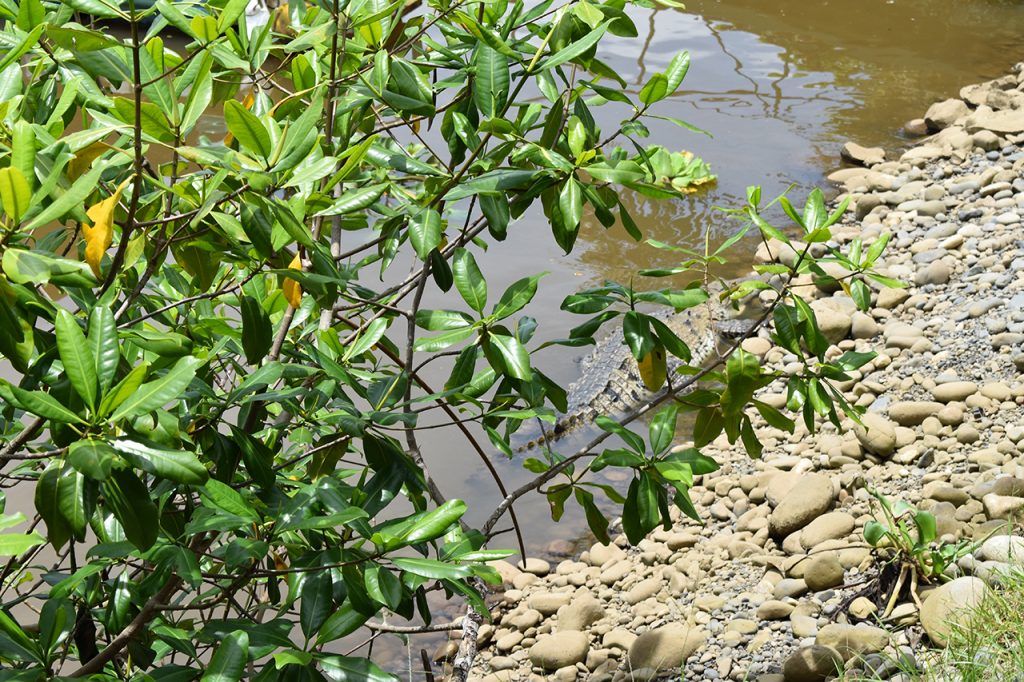
After an hour between canals and mangroves, we arrive at Bahía Drake. It turns out that there is no pier, which nobody had the courtesy to warn, and we had to take off our shoes to get off between waves (which is dangerous because the waves are quite strong).
There, a chubby man was waiting for us, with half his teeth missing, who helped us with one of the backpacks to the hotel that was on a mountain.
They checked us in and spent an hour telling Diego about the tours they did. The room cost $25 per person per night and it was a shack, like almost all accommodations in Costa Rica.
The prices in the restaurants were more expensive than in the rest of Costa Rica.
That same afternoon we walked to a river that was 30 minutes away. It was a wonderful place and without people.
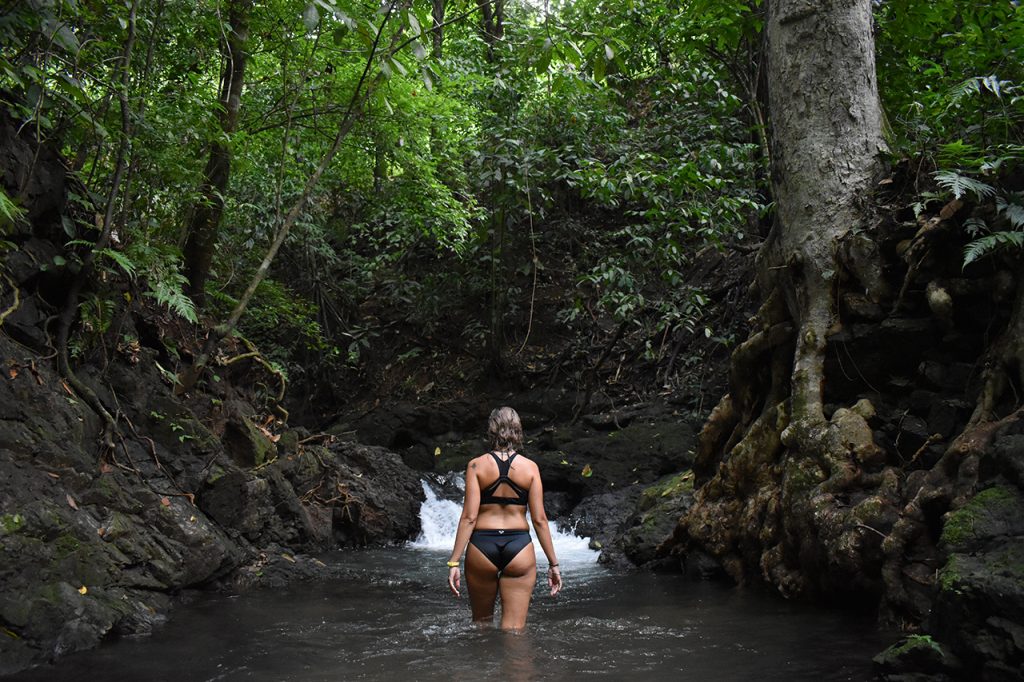
The next morning we went on a trek, which is the only free thing to do from Bahía Drake. We walked from the hotel and during the first hour, you find the hotels that are farthest from the center.
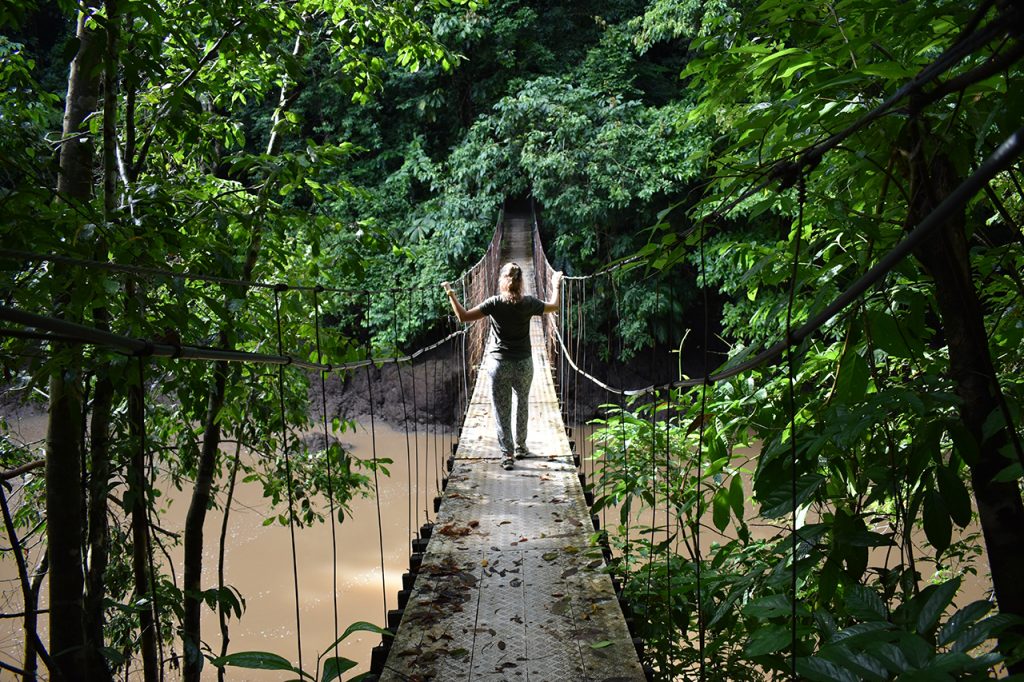
Our goal was to get to San Josecito Beach, which was a 3-hour walk away.
We were walking quietly between the beach and the forest. Very slow and attentive to see animals. On one of the beaches, we saw a coconut falling from the palm tree and when I went to look for it, I found 5 in total. We hung the things on a tree and Diego began to bang them open against a stone.
We made a cup with the same coconut and a teaspoon with a branch.
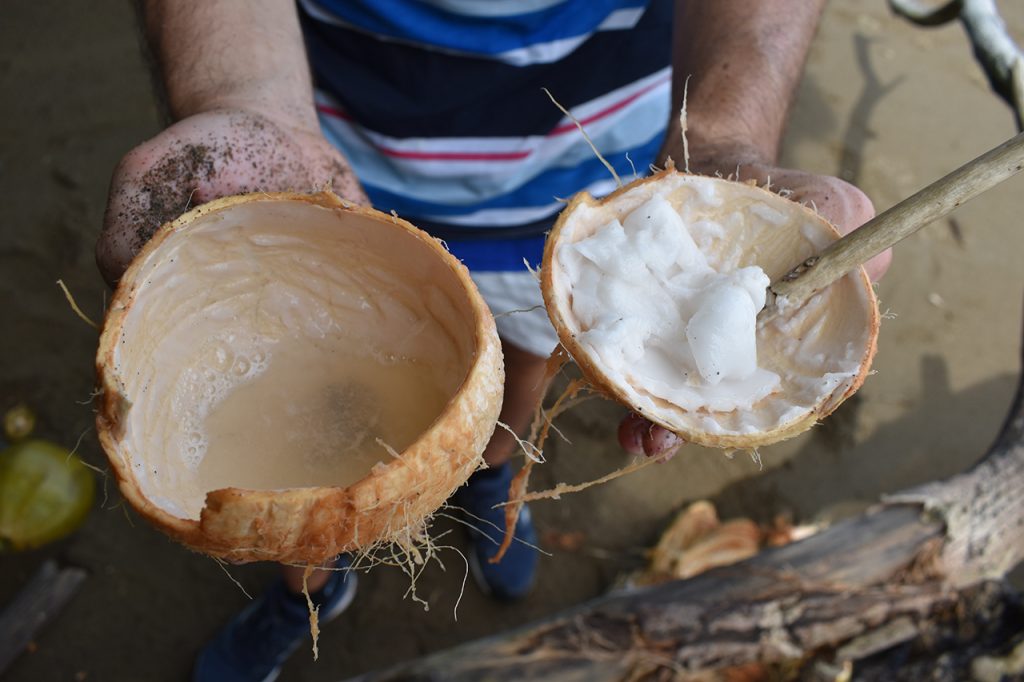
After 2h30, we arrived at a part where a boy was camping. His name was Michael and he lived in the town that is at the beginning of the route. In his tent he had a kitchen, coconuts, bananas and a well where he put what he caught.
Next to his tent was a wide river. We asked him how we could follow the path and he told us that there were two options:
- Do 10 more minutes of trekking and blow a whistle for a man to come and cross us in his boat. He charged $3 per person to pass two meters.
- Cross the river on foot.
Diego crossed the river, but the water was up to his head, and I was scared in case the backpack would get wet. We had a bag to put it in, but it still didn’t give me confidence. We kept walking and called the one from the boat to cross us, but no one came. So, we decided to stay there waiting to see if the tide would go out and we could walk across.
We saw a couple that was walking with a dog, and they crossed as we thought to do: with the backpack on their heads. The water completely covered them, absolutely everything got wet, and the river almost carried them away.
When they left, the dog that was with them stayed with us. The girl told me that he had accompanied them all the way from the village and that now he was tired. We decided to call him Josecito after the beach. I will tell you about him in the next post.
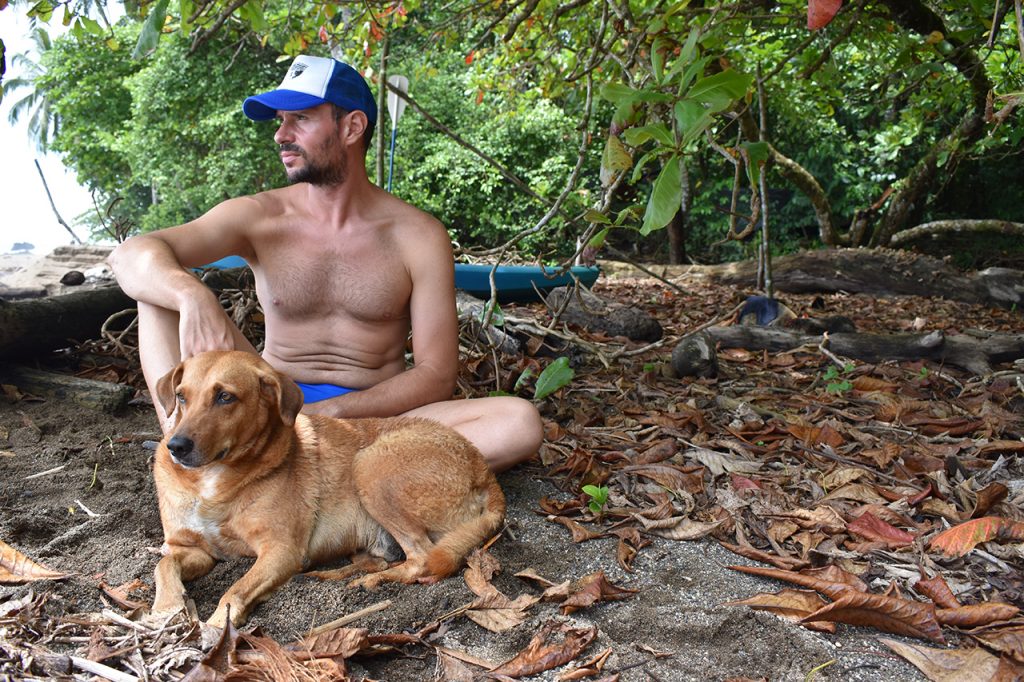
We decided to go back as it was going to be impossible to get through that day. We said goodbye to Michael, who treated us to a delicious coconut and told him that we would come back earlier the next day.
The way back was more difficult because the tide was high, and the beaches were totally covered. The trail was wetter and muddier than before. All the sections that we did on the beach in the morning, we had to do them through the forest, and it was impossible not to end up covered in mud.
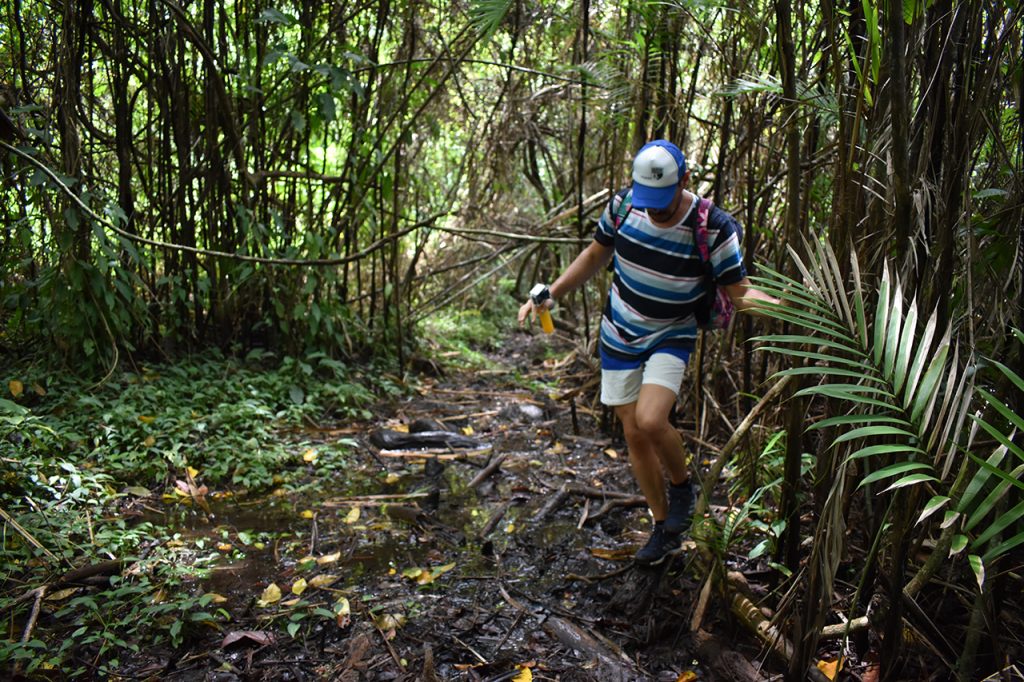
We went up to the hotel to leave our things and went down to the beach in front of the town. Nobody bathes there because the water is brown and churned up.
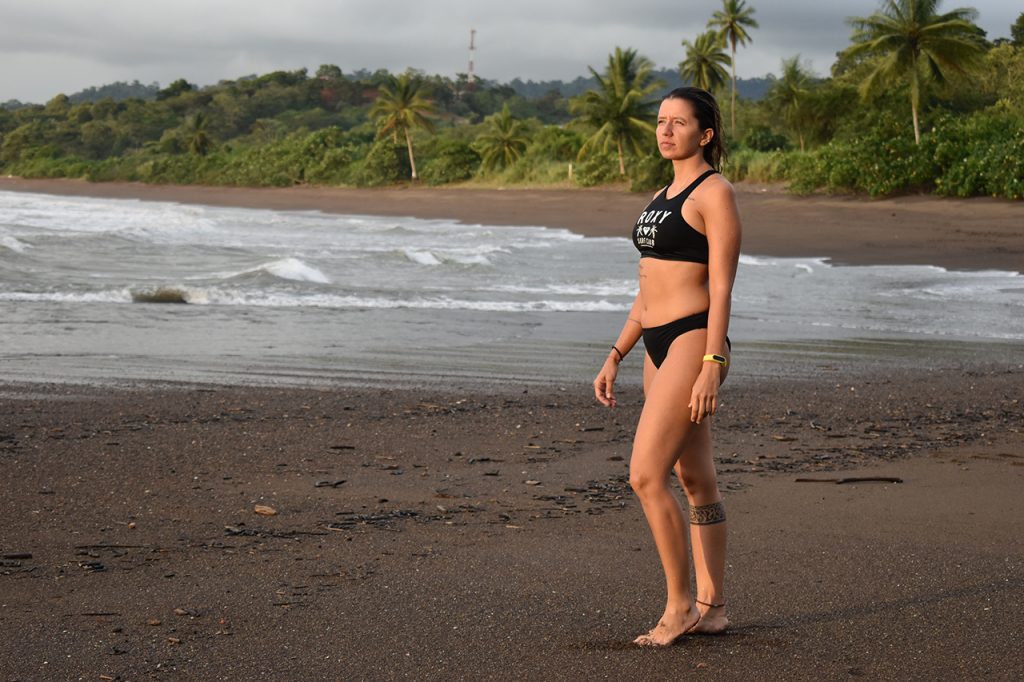
The next day we took the road to San Josecito Beach again. This time fast and without stopping to take photos. We wanted to walk the path alone through the forest, but we got lost. There were signs indicating the direction to a waterfall, but it was clear that no one had passed that way in a long time. We also got into a part of rocks since we thought the path followed that way, and we almost killed ourselves.
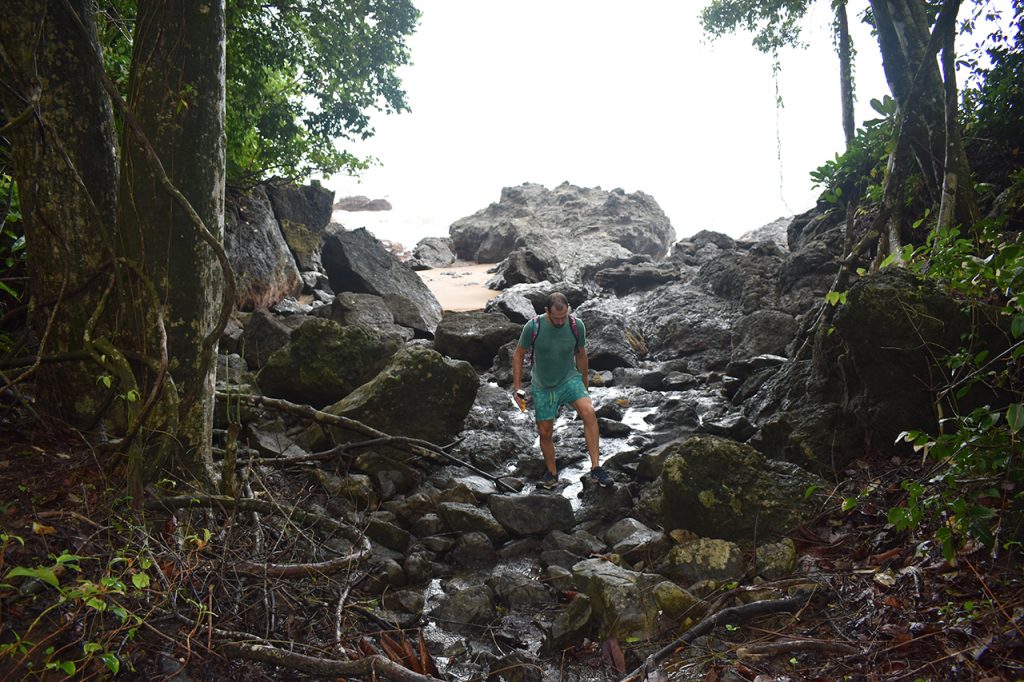
We got to the river and luckily the water was up to our knees. We took off our shoes, put our backpack in a bag just in case, and crossed.
We arrived at San Josecito Beach and there was nobody. We were able to snorkel as the water was crystal clear.
We decided to return by boat since we were very tired ($10 per person). Just when we got on the boat it started to rain, so it was very wise not to walk back. What cost us 3 hours through the forest, took 20 minutes along the coast.
Bahía Drake is a special place for its almost virgin rainforest, but like all places in Costa Rica, it lacks infrastructure and the people who work in tourism have a vocation. Our hotel, in addition to being horrible and decadent, had owners who gave a lot to be desired. They were only nice for the first 5 minutes to try to sell us tours, when they realized that they were not going to take money from us, things changed.
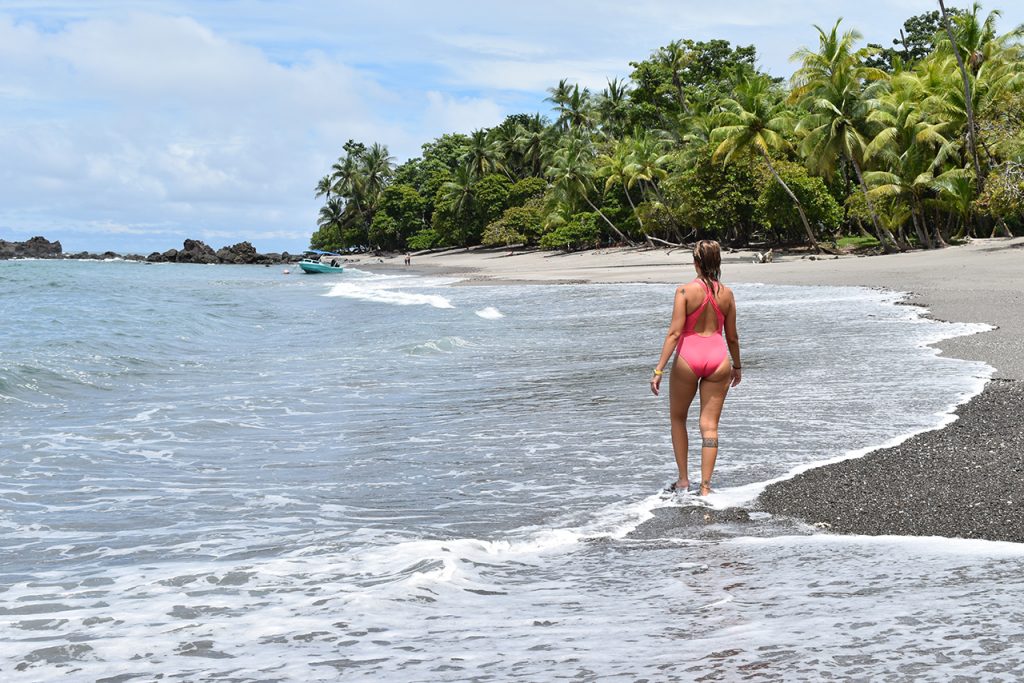
The entrance to the Corcovado National Park must be done with a guide and, in general, you go by boat to the entrance. There are roads that arrive, but nobody recommends them because of the poor condition they are in. In all the places we visited, the roads were full of holes, so imagine what an impassable road will be for them.
The tour was at that time $90 per person. We read that people were disappointed because they took a three-hour boat ride to go to the national park and didn’t see any wildlife. That’s why we decided not to do it. Instead, we enjoy places that most tourists don’t even remotely get into.
In short, in Bahía Drake we enjoy and live the humid forest at its best, on our own, without tourists and without guides. We got into the deepest green, we filled our shoes with mud, we got wet with the rain and we sweated profusely. We found animals that were surprised to see people and the capuchin monkeys almost lynched us for taking too many photos of them.
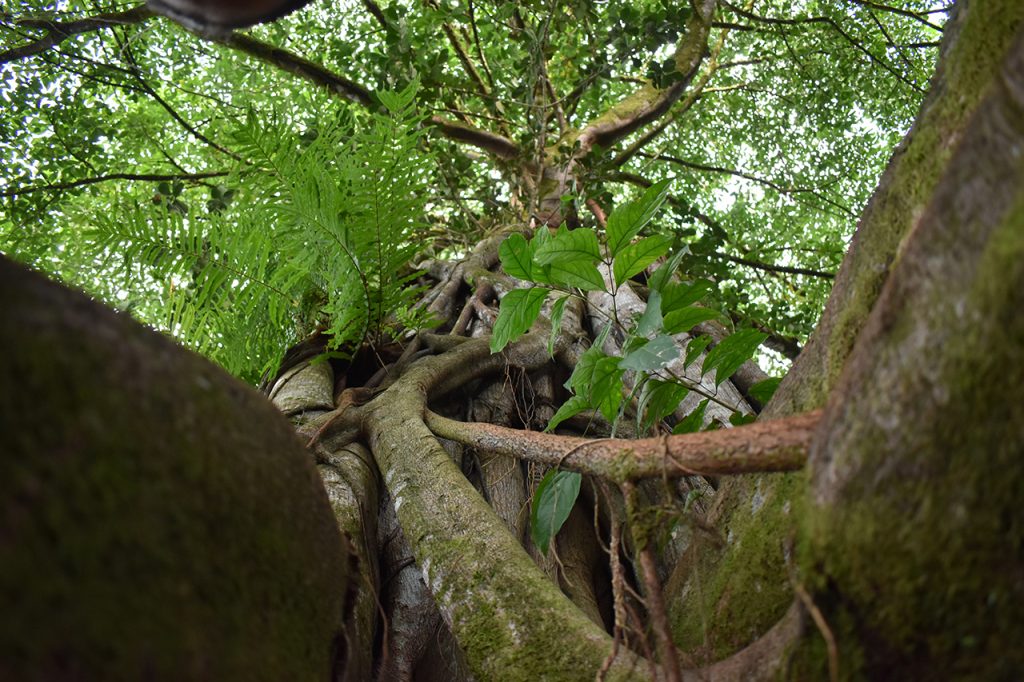
Here is the link to my YouTube channel:
More articles about my trip to Costa Rica:

